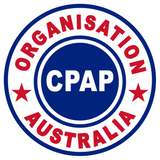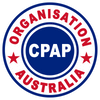What is Obstructive Sleep Apnea (OSA)?

When you have Obstructive Sleep Apnea (OSA), your breathing will stop for short periods of time while you sleep. When you breathe in normally, air rushes in through your mouth, nose, and down your throat, also known as the pharynx. The air then passes down your windpipe or trachea and into your lungs via a tree-like arrangement of smaller tubes. When you breathe in, the soft tissues in your mouth and throat get pulled inwards by negative suction pressure. The pharyngeal muscles respond by tugging the soft tissues outward again, keeping your airway open. It is natural for the muscles of your mouth, tongue, and throat to relax slightly as you sleep, but not enough to block your airway.
If you suffer from Obstructive Sleep Apnea, the muscles in your mouth and pharynx may become overly relaxed. Your tongue slides along the roof of your mouth, pressing towards the back of your throat. This absolutely prevents air from entering your lungs. You may be awakened by a lack of oxygen in your lungs. Before falling asleep again, you could struggle to re-establish airflow.
The cycle of apnea and waking up may occur several times during the night, impeding comfortable sleep. Obesity may contribute to Obstructive Sleep Apnea because more fat may be present in the pharyngeal walls. A small or receding jaw with a restricted airway as a result of age and swollen tonsils.
Snoring, greater morning headaches, chronic daytime sleepiness, weariness, irritability, and decreased attention are all common signs of Obstructive Sleep Apnea. Obstructive Sleep Apnea, if left untreated, can lead to issues such as high blood pressure, heart disease, and irregular heartbeats known as heart arrhythmia may cause stroke and diabetes.
Your doctor may recommend lifestyle modifications such as decreasing weight, sleeping on your side, not smoking, and avoiding sleep-inducing medications such as alcohol and sedatives.
If you have mild or moderate Obstructive Sleep Apnea, an oral appliance may help keep your airway open. This device works by lifting your jaw forwards and repositioning your tongue and roof of your mouth away from the back of your throat.
A CPAP Machine (Continuous Positive Airway Pressure) is the most common and successful treatment for Obstructive Sleep Apnea. This device pushes air through a tube and into a mask that fits over your nose or over both your nose and mouth. The CPAP machine's gentle air pressure keeps your airway open, allowing you to sleep deeply and restfully.


Leave a comment